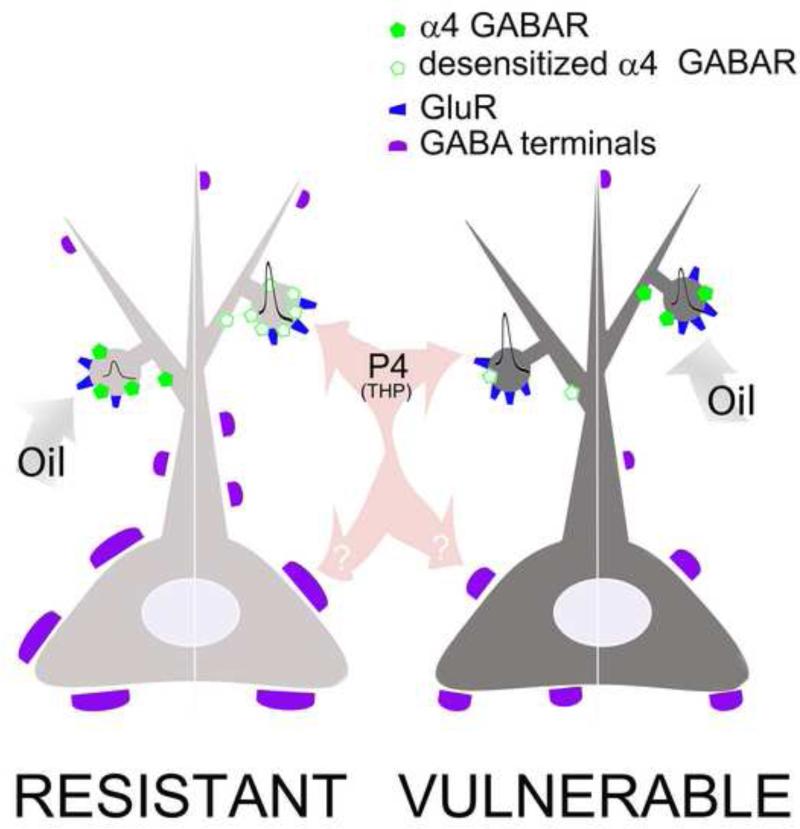Figure 8. Proposed mechanism for P4-induced behavioral sensitization of resistant animals.
P4 injection exacerbated WRA response to the 2nd ABA induction. α4-immunoreactivity was associated with resistance measured before the 2nd ABA, yet also with behavioral sensitization in P4-injected mice. We propose a mechanism to explain these dual associations of α4-GABAARs. Assumptions for the model are: 1) the injected P4 is readily converted to THP; 2) exposure to P4's metabolite, THP, causes insertion of α4-containing GABAARs into the membrane, along with up-regulation of its expression during the first 48 hours (Hui Shen et al., 2005); 3) A certain proportion of α4-GABAARs in the dorsal hippocampus of female adolescents are desensitized by the stress hormone THP and this desensitization is associated with increased anxiety (Shen et al., 2007) ; 4) anxiety is positively correlated with WRA (Wable et al., 2015). Our proposal is that α4-GABAARs play a protective role by counterbalancing the ABA-induced increased excitability of CA1 pyramidal neurons following food restriction, and although exogenous P4 enhances α4 expression, especially among those that can gain resistance, it also interferes with α4-GABAARs’ protective role by desensitizing α4-GABAARs.
The green polygons symbolize α4-GABAARs; while the unfilled green polygons symbolize desensitized α4-GABAARs. Blue symbols depict glutamatergic receptors. Animals that up-regulated α4-GABAARs in response to the 1st ABA became resistant (neuron to the left, with many α4-GABAARs on spines), while animals that failed to up-regulate α4-GABAARs remained vulnerable to ABA, as they were during the 1st ABA induction (neuron to the right, with fewer α4-GABAARs). P4 injection during the 2nd ABA increased α4-GABAARs expression more than by oil alone (compare the right versus left halves of the neuron belonging to the resistant animal). P4 injection upon vulnerable animals led to reduction of α4-GABAARs, relative to the expression level observed by neurons of vulnerable animal injected with oil vehicle, only (compare the left and right halves of the vulnerable animal's neuron). Exogenous P4 also desensitized α4-GABAARs. This desensitization is likely to have unmasked the glutamatergic receptors (GluR, blue symbols on spines) that would have been counterbalanced by α4-GABAARs.
Sensitization occurred for the P4-injected resistant animals (right half of the left neuron), because desensitization of α4-GABAARs by THP unmasked more of the glutamatergic receptors, thereby rendering the neurons hyper-excitable, as indicated by the amplitude of the unitary excitatory postsynaptic current (epsc) drawn within its spine. Oil-treated resistant animals were not sensitized, because α4-GABAARs continued to mask glutamatergic receptors (left half of the left neuron, note the small amplitude of the epsc). Neurons of the vulnerable animals were hyper-excitable, with or without P4 treatment, because the α4-GABARs were never sufficient in number to counterbalance the glutamatergic receptors (note the intermediate to high amplitudes of the unitary epscs). Since the extent of GABAergic innervation onto CA1 pyramidal neurons contributes to the animals’ resistance to ABA induction (magenta bars surrounding dendrites and somata) (Chowdhury et al., 2013), it would be worthwhile to test whether P4 and or its metabolite, THP, alters GABAergic innervation upon these neurons (question mark in the arrow). Elevation of α4-GABAARs is associated with a concomitant down-regulation of synaptic, i.e., α1-containing GABAARs (Hui Shen et al., 2005), another factor that may contribute towards P4-mediated sensitization.

